
by Julie McConnell | Jul 16, 2020
We hope you were able to join us for Gardening in the Panhandle LIVE! Butterfly Gardening on July 9th to learn about attracting butterflies to your Florida gardens. As promised, we have compiled a list of butterfly resources that we talked about during the webinar and a few extra that we didn’t have time to cover.
If you were not able to join us live, you can still watch the videos on Facebook or YouTube
Click on the topic of interest for links to resources:
Don’t forget to tune in for our next Gardening in the Panhandle LIVE! on July 23rd for Prepping for the Fall Garden. Register for that webinar on Zoom or Follow our Facebook Event for updates.
For a full list of upcoming webinars visit Gardening in the Panhandle: LIVE!
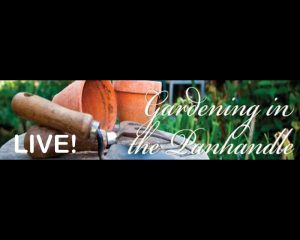
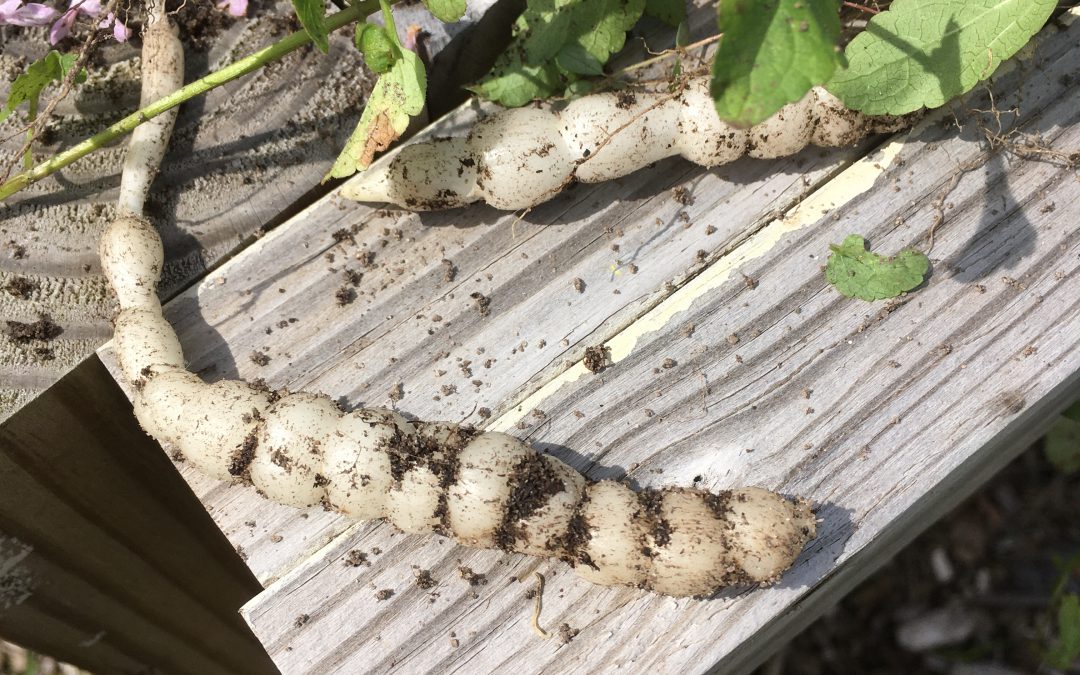
by Julie McConnell | Jun 11, 2020
Why are the plants we are trying not to grow so hard to kill? Weeds can be quite frustrating to home gardeners as they struggle to get them under control. There are a few things you can do to help make your efforts more successful.
Identify the weed. It might seem like it doesn’t matter what the plant is if you know you want to get rid of it, but a big part of your strategy should be figuring out why that plant is being so difficult. Below are the reasons why weed identification is so critical in your fight to control it.
- Which plant are you favoring with your maintenance routine? All plants have similar basic needs: water, sunlight, nutrients, and a space to grow, but some perform better with varying amounts of each of these inputs. Sometimes we can influence these factors in a way that favors one plant over another. The best example is how we irrigate our landscape. If you plant drought tolerant shrubs, such as Indian Hawthorne, which can survive with little to no irrigation after establishment, and then continue to water 2-3 times a week, is it any wonder that you get water loving weeds such as dollarweed, torpedograss, or sedge? Only apply inputs that support your desirable plants and nothing more.
- Recognize the weed type. There are three main types of weeds we typically encounter: broadleaf, grass, or sedge. Some herbicides are broad-spectrum, which means they kill any type of plant, while others are selective. Selective herbicides generally target either broadleaf, grass or sedge weeds and have minimal impact on the other types. This can be very important information to have if you are shopping for an herbicide.
- Understand the life cycle. Herbaceous plants fall into three main life cycle categories: annual, perennial, or biennial. Annuals and biennials tend to reproduce primarily from seed. The annual plant completes its entire life cycle in one season or year and a biennial takes two years. When targeting these two, your goal is to get rid of the plant before it flowers and sets seed to reduce future crops. If you miss that window and the weeds go to seed, plan to use a pre-emergent herbicide prior to their next scheduled germination date (usually the next season). Perennials live for more than 2 years and tend to be tough to manage. They may reproduce by seed but many also multiply by vegetative means. To put this simply, they store everything they need in tiny pieces of the plant and if left in place, it will generate more plants. So, that little tiny root fragment from dollar weed you didn’t pull up – yep, it’ll grow a whole new one in its place!
For more information on weeds and weed control in lawns and landscapes, contact your local UF/IFAS County Extension Office!
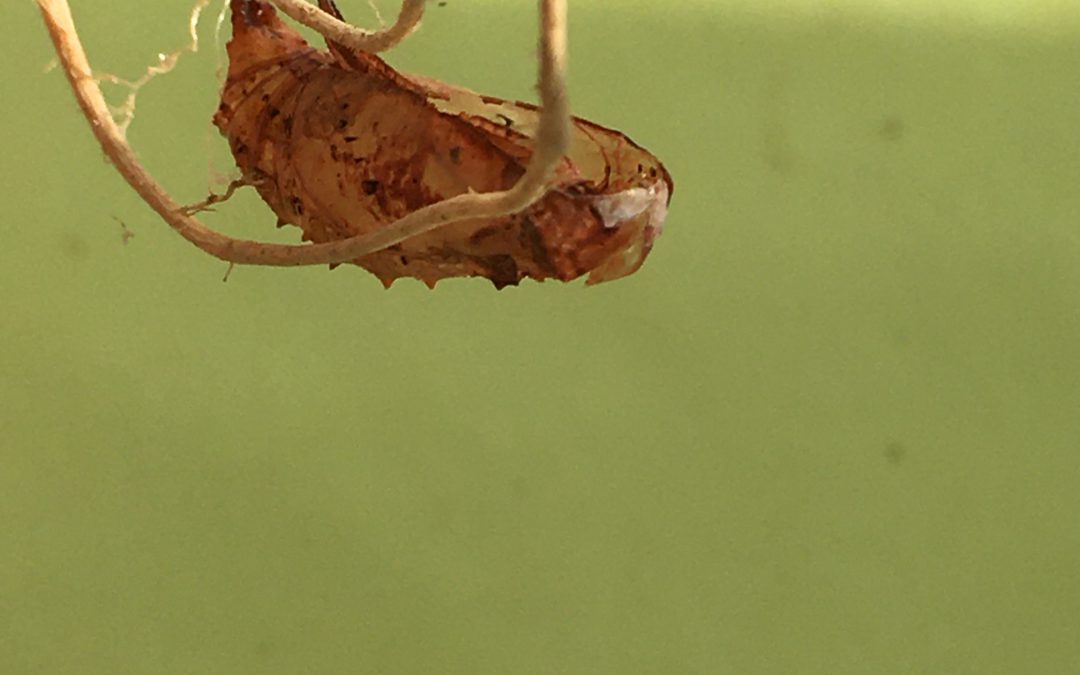
by Julie McConnell | May 13, 2020
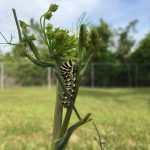
Eastern black swallowtail caterpillar on fennel. Photo: J_McConnell, UFIFAS
Working from home has given me the opportunity to take more notice of my landscape and allow more time for insect scouting. While looking for turfgrass pests a few weeks ago, I noticed a caterpillar I didn’t recognize feeding on a broadleaf weed in my lawn. Since it didn’t appear to be a typical turfgrass pest, I decided to collect a few and try to figure out what they were. I’m glad I did because it turned out they were Buckeye Butterfly larvae! This random find has led me to some experimentation with raising butterflies and I thought I’d share some tips in case others might like to try it.
**Before collecting be sure to consult the U.S. Fish and Wildlife list of endangered and threatened species in Florida and never collect from Florida State Parks or other dedicated conservation areas. Never release species not native to our ecosystem. **
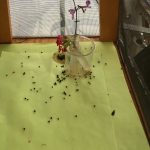
Lining the bottom of your enclosure with paper makes cleanup easier. Photo: J_McConnell, UFIFAS
You will need an adequate enclosure to keep caterpillars, chrysalises, and newly emerged butterflies/moths. I am fortunate to have a beautiful handmade cage constructed by a Master Gardener Volunteer at my disposal. It has a wooden frame and floor, screened walls, and the door latches. There are many options available for online purchase, but I would recommend getting one listed as “tall” or having a minimum height of 24 inches. Also, be sure you will be able to clean it easily – growing caterpillars create a lot of frass (excrement) that needs to be cleaned daily. I line the bottom of my enclosure with paper for quick cleanup.
Be sure you can offer fresh food for caterpillars and butterflies. Caterpillars usually have a limited menu of what they can eat depending on species. If you find them actively feeding on a plant, that is a pretty good sign that it is a good larval food source. Once you identify the caterpillar you can look up alternate larval host plants that the species eats.
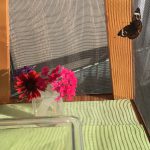
Provide a variety of fresh flowers when butterfly emerge
Collecting foliage and keeping it hydrated can be a challenge. I use small floral water tubes. They have rubber lids that pop on and off with slits where I can insert small stems, but the insects do not get in and drown. I usually set these in another container to keep them upright. I can easily add fresh flowers when I expect a butterfly to emerge so that nectar is available. If your enclosure is large enough you may be able to keep small potted plants inside, just remember to keep them watered.
Where do the caterpillars come from? I intentionally plant several plants that are larval butterfly (caterpillar) hosts such as parsley, fennel, and passionflower vine. I check these plants for caterpillars that I can collect along with foliage. After the butterflies emerge, I release them into my yard so they can find a mate and keep the cycle going.
For more information on attracting butterflies to your landscape see Butterfly Gardening in Florida.
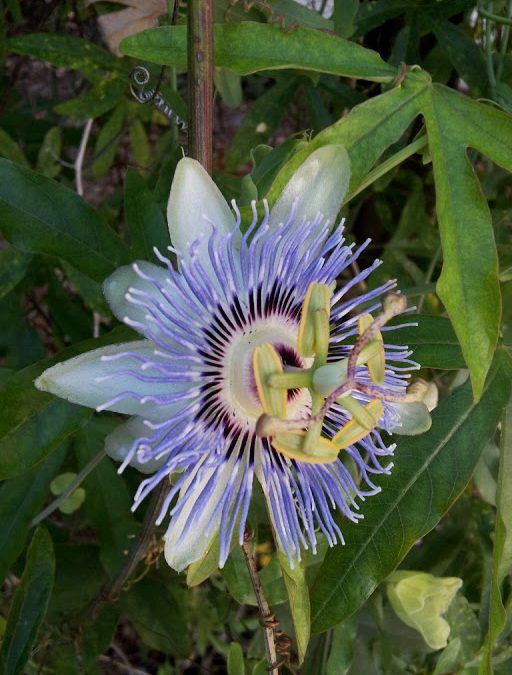
by Julie McConnell | Apr 15, 2020
The spring is traditionally a busy time in the life of a Horticulture Extension Agent. As plants start to awaken from winter and people get the urge to get outdoors, lots of questions pour into the office about growing everything from flowers to trees. There is also an uptick in diagnostic questions at this time of year as insects emerge and plant disease organisms thrive in the warm, humid weather. Usually, most of us are running from one event to another and don’t have much time to focus on our own yards, but this year is different.
Many of us are working from home; my own makeshift office is on my back patio. The more time I spend out here, the more I notice the plants, insects, birds, and other wildlife I am usually moving too quickly to appreciate. We know that while you are following the #stayhomesavelives protocol you are paying even more attention to your landscapes than usual, too. We hope you will use this time to either enhance your gardening expertise or just learn the basics and we are here to help!
Although the doors to our offices may be locked, your UF/IFAS Extension Agents are still available to help answer your gardening questions. We are also working hard to develop more online content every day. Here are some online social media resources already available:
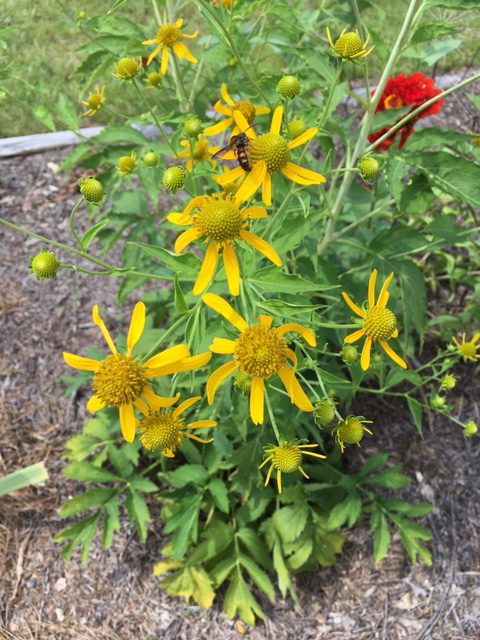
by Julie McConnell | Aug 22, 2019
Until plans were underway for our UF/IFAS Demonstration Butterfly Garden, I had never heard of Cutleaf Coneflower, Rudbeckia lacineata. Master Gardener Volunteer Jody Wood-Putnam included this gem in her garden design and introduced me and many of our visitors to a new garden favorite.
Although in the same genus as your common Black-eyed Susan’s (Rudbeckia fulgida or R. hirta) this perennial has very distinct differences. Rather than the low growing, hairy, oblong leaves of Black-eyed Susan, Cutleaf Coneflower has smooth pinnately lobed leaves with serrated edges. The leaves are still clump forming but form an almost bush-like shape. By mid to late summer, tall flower spikes emerge and are covered in bright yellow flowers bringing the overall height of the plant over 5 feet tall!
Cutleaf Coneflower is native to North America with several variations adapted to different regions including the Southeast and Florida. This perennial performs well in full sun to part shade and needs a lot of space. Mature plants can reach 3’ wide by 10’ tall and may require staking. The plant can spread through underground runners, so be sure to give it lots of space. In North Florida leaves may be evergreen if winter is mild. Cutleaf Coneflower is a good wildlife attractant providing nectar and pollen for many insects and if you leave the flowers on to mature the seed the is eaten by songbirds, including goldfinch.
To see this plant in person, stop by the UF/IFAS Demonstration Garden at 2728 E. 14th Street, Panama City, FL. If during normal business hours, check in for available seeds from our Pollinator Garden. 850-784-6105









